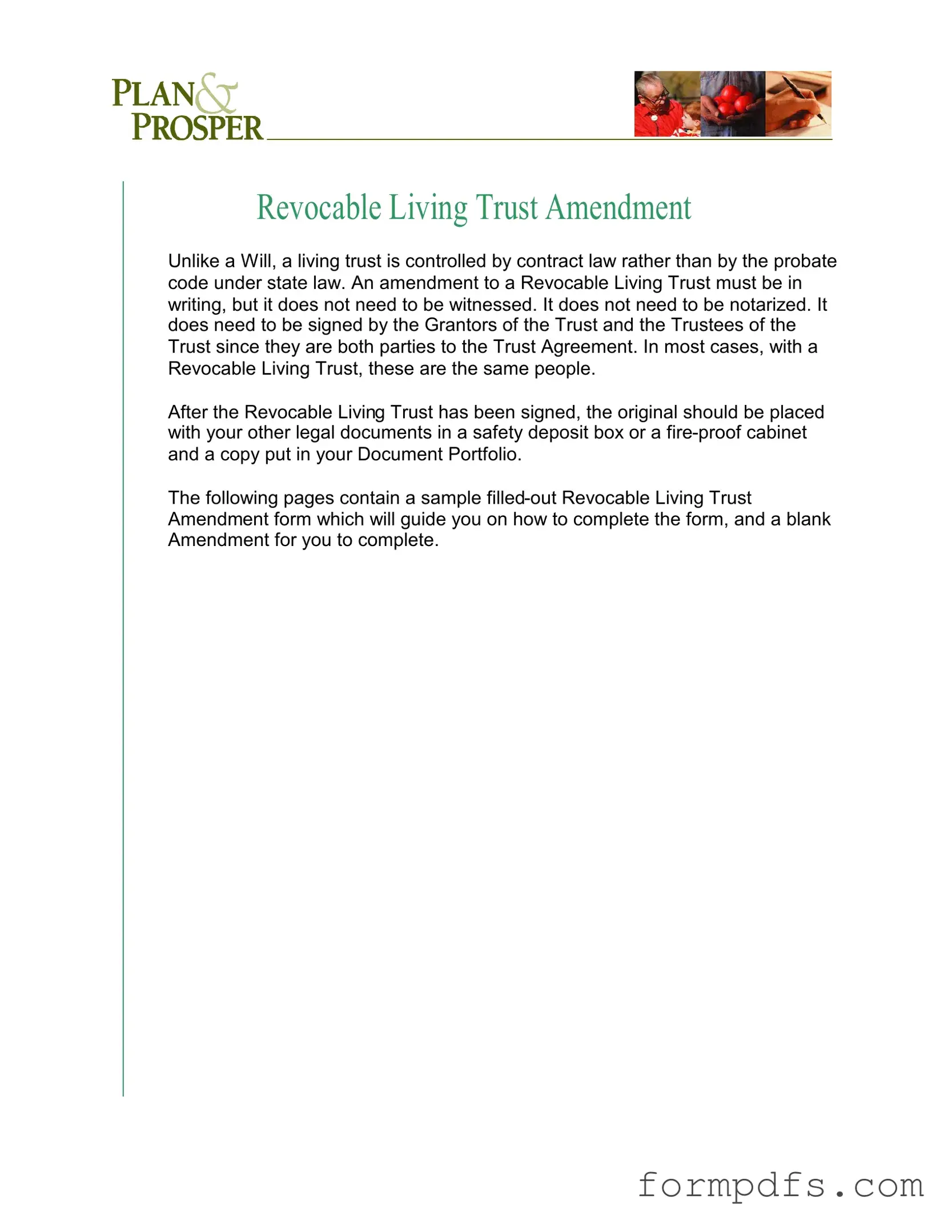What is a Trust Amendment form?
A Trust Amendment form is a document used to make changes to an existing Revocable Living Trust. This type of amendment allows the Grantor(s) to modify the terms of the Trust Agreement without having to create an entirely new trust. It is important for ensuring that the trust reflects the current wishes and circumstances of the Grantor(s).
Do I need witnesses or a notary for the Trust Amendment?
No, a Trust Amendment does not need to be witnessed or notarized. However, it must be signed by both the Grantor(s) and the Trustee(s) since they are the parties involved in the Trust Agreement. This simplicity makes it easier to update the trust as needed.
Who should sign the Trust Amendment?
The Trust Amendment must be signed by the Grantor(s) and the Trustee(s). In most cases, these individuals are the same people, which streamlines the process. Both signatures are necessary to validate the amendment and ensure that all parties agree to the changes.
Where should I keep the Trust Amendment after signing it?
After signing the Trust Amendment, it is recommended to store the original document in a safe place, such as a safety deposit box or a fire-proof cabinet. A copy should also be kept in your Document Portfolio for easy access and reference.
Can I make multiple amendments to my Trust?
Yes, you can make multiple amendments to your Trust. Each amendment should be documented clearly and signed by the appropriate parties. This allows for ongoing adjustments as your circumstances or intentions change over time.
What if I want to revoke my Trust instead of amending it?
If you wish to revoke your Trust entirely, you can do so by following the procedures outlined in the original Trust Agreement. Typically, this also requires a written document signed by the Grantor(s) and Trustee(s). It is advisable to consult with a legal professional to ensure the revocation is done correctly.
